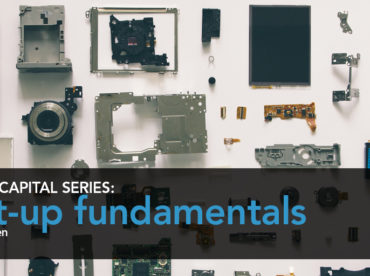A few years ago, during my first start-up adventures at Sunnybrook Technologies, a prototype fire taught me two important tech entrepreneur lessons:
1. Good entrepreneurs don’t panic.
2. Adversity is an opportunity, not a problem.
We had just finished the first prototype of what would become the world’s first commercial high dynamic range LED display: the venerable Zeetzen-5.
Today’s LED TV bring power to the very efficient backlight at fairly high voltage. That wasn’t possible for us in those early days. Lacking dedicated LED drivers, we brought 1400W up from two huge power supplies at 4 volts through a thick cables (the picture shows the base unit on the top right, main chassis with power bus in the middle and backlight unit on the right edge).
The prototype was just finished, when we got a major strategic meeting with top executives at Kodak. At the time Kodak was in the process of shifting from analogue film to digital, and they saw us as a potential major opportunity. Dynamic range is a key issue for film, and we had created a digital high dynamic range which would be a great companion piece for them. After some soul-searching about the state of the prototype, we flew to Rochester, excited for our first major commercial demo.
After arriving in Rochester and meeting the executives, we set up the unit, started the demo, flipped the power switch and BOOM! The whole room turned black. There was the kind of nasty black smoke that you get when you burn tires and a flame shooting out of the unit. Everybody got up in a panic, people were in the hallway and there was a fire alarm warning. It was just a humiliating disaster. We just managed to avoid a full scale evacuation of the whole Kodak research facility and got everybody back into the room.
So what do we do now? The instinctive response would be to slink away, cry a little, and write off the meeting. Instead, we did what good entrepreneurs should do. My partner just calmly took over the PowerPoint and said, ‘We’re just having some minor technical issues here,’ and gave the presentation. Meanwhile, I opened the box and found that a strand of the metal cables had come out from the connection point and shorted against the unit’s case. At 100 amps, the short instantly evaporated the insulation around the wire, and that’s where the thick rubber smoke had come from. I thought, ‘I can fix this.’
Warning: Do not attempt this at home. I wish I could say that I was a training professional but at the time I was just an undergrad student with just too much hacker hustling energy. Electricity at this current *will* do very unpleasant things to you.
Step 1: The fuse on the power supply was blown, and we didn’t have spare parts other than little pocket screwdriver. I took a metal bit from the screwdriver and popped it in the fuse holder. Any good engineer will tell you that this is not something you should do (listen to them!).
Step 2: I then tried to figure out how to insulate the wire. The only thing I had available to me was a stack of napkins from the muffins on the table. I took the napkins, made a little carrying hammock out of them, and put the wire inside. I was able to hold the hammock with my hand and pull up the wires to keep them from touching the ground.
So we went back to the demo. I was giving the demo pitch, pointing with my right hand to the screen and illustrating all the different issues, while my left hand was behind the unit, hidden by the open box, holding this little napkin hammock. I was praying hard that the wires wouldn’t short out again turning the napkin, and by extension myself, into another flaming contraption. It worked. Kodak was duly impressed.
After the meeting, we drove from Rochester to southern Ontario, invaded the home of an old acquaintance of my colleagues, and used his tools for a slightly more robust repair of the unit – and then spent another few days doing fundraising demos with prayers on our lips. The show must go on!
Lesson 1: Don’t panic. Things will go wrong in demos. The best and only thing you can do is to take parts with you (more than a screwdriver – these days I travel with entire carrying cases full of nothing but spare parts). Most importantly, when something bad happens don’t lose your cool, don’t freak out, don’t start crying, and don’t give up. The reality is that you will only make it worse by panicking or giving up. You have done your homework, traveled a long distance, and these people have booked time for a meeting with you. You might as well salvage the meeting.
Lesson 2: I am pretty positive that Kodak’s take-away from the meeting was not, ‘These guys can’t build displays.’ They knew that the technology we were developing was complex and a world’s first with a lot of technical risk in the system. I think what they took away was, ‘These guys know this stuff so well, they can field repair with a napkin and a screwdriver.’ When a big company looks at a start-up, that knowledge is much more valuable than your ability to make polished little systems. Companies are not going to buy you for your polishing skills; they have plenty of those. They are looking for deeply ingrained technical expertise. Technical problems actually give you an opportunity to demonstrate that expertise. I still would not deliberately break demos during a meeting, but don’t be scared if it happens. For entrepreneurs, adversity is an opportunity, not something to be feared.



